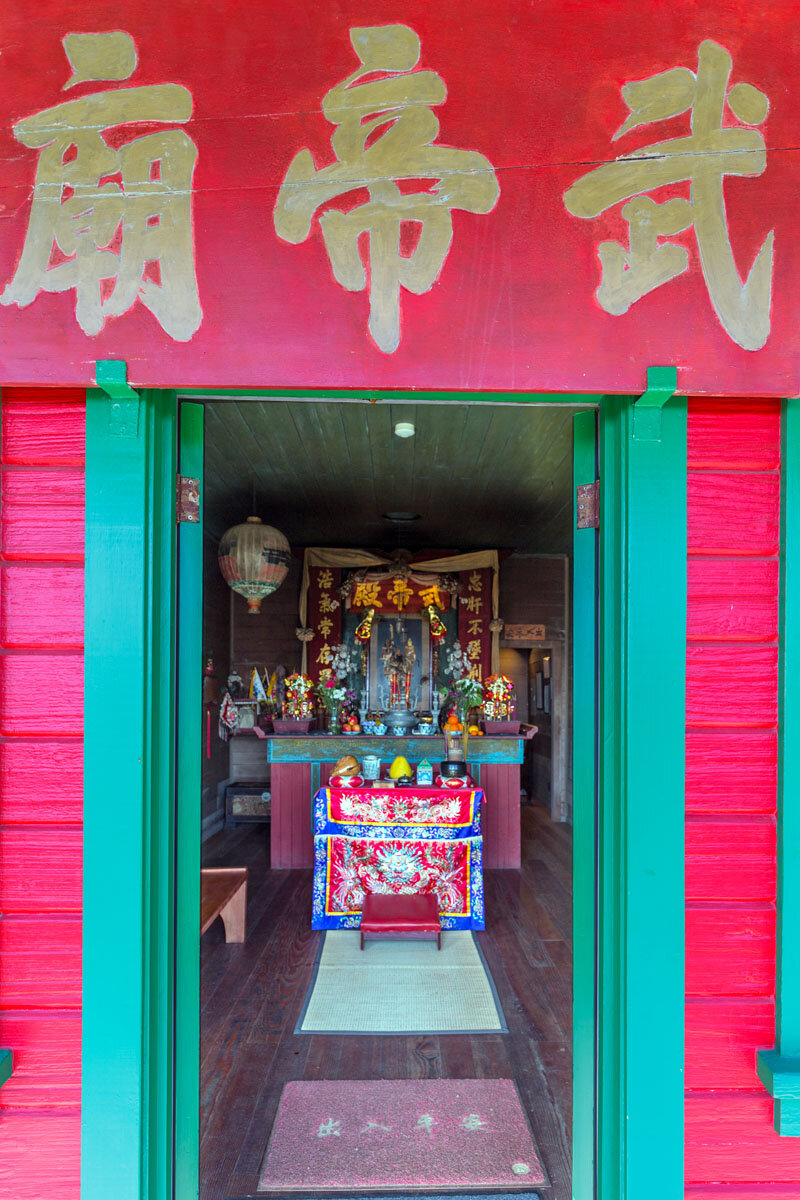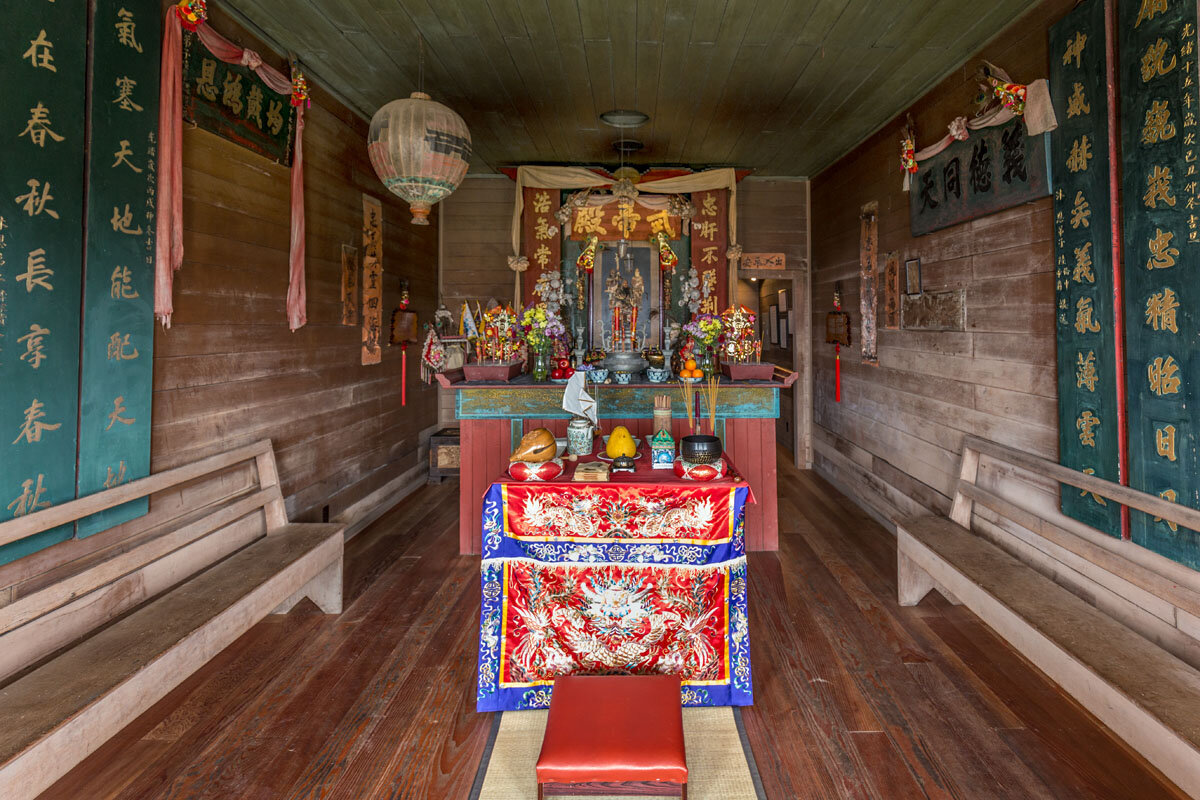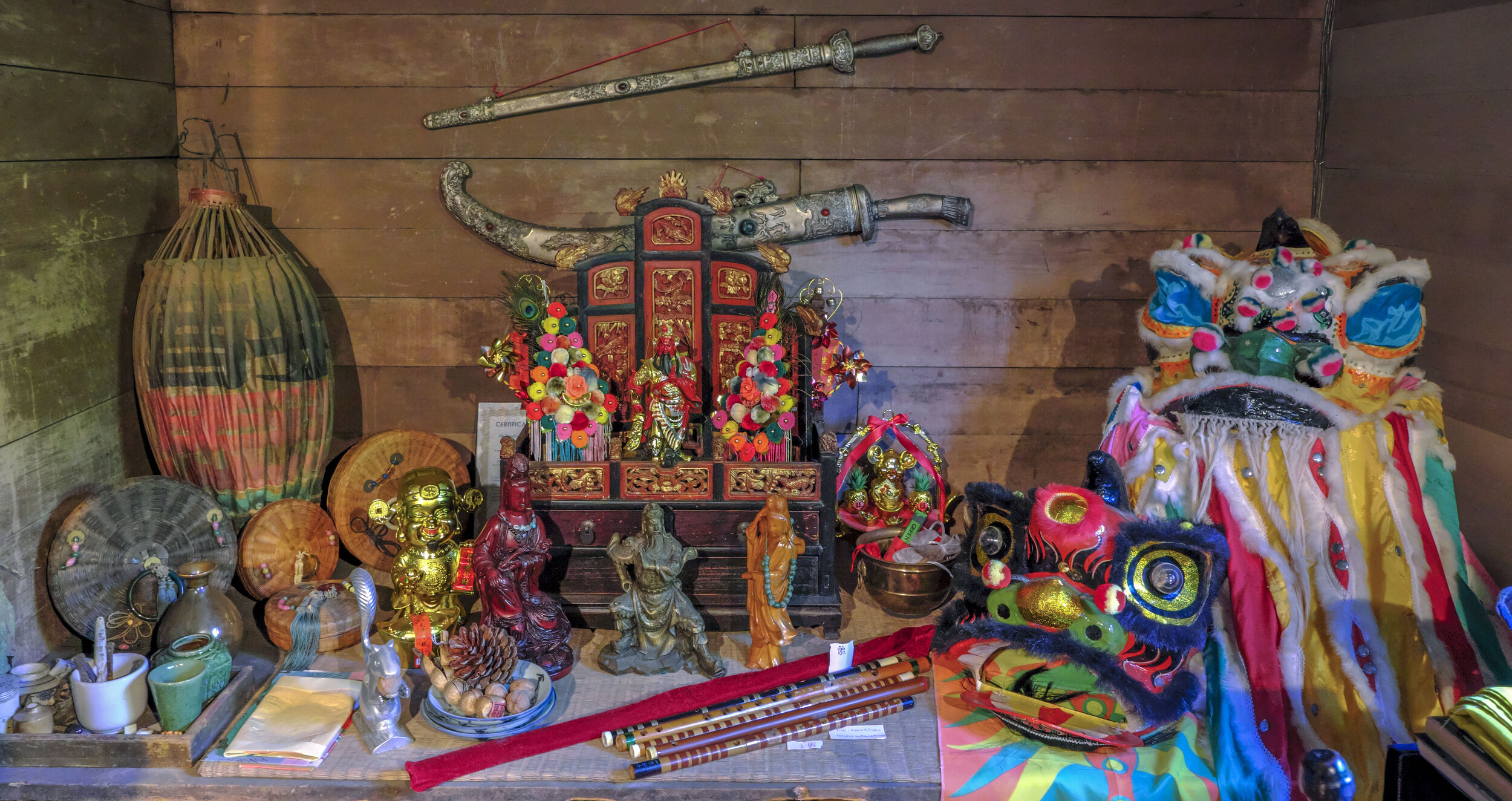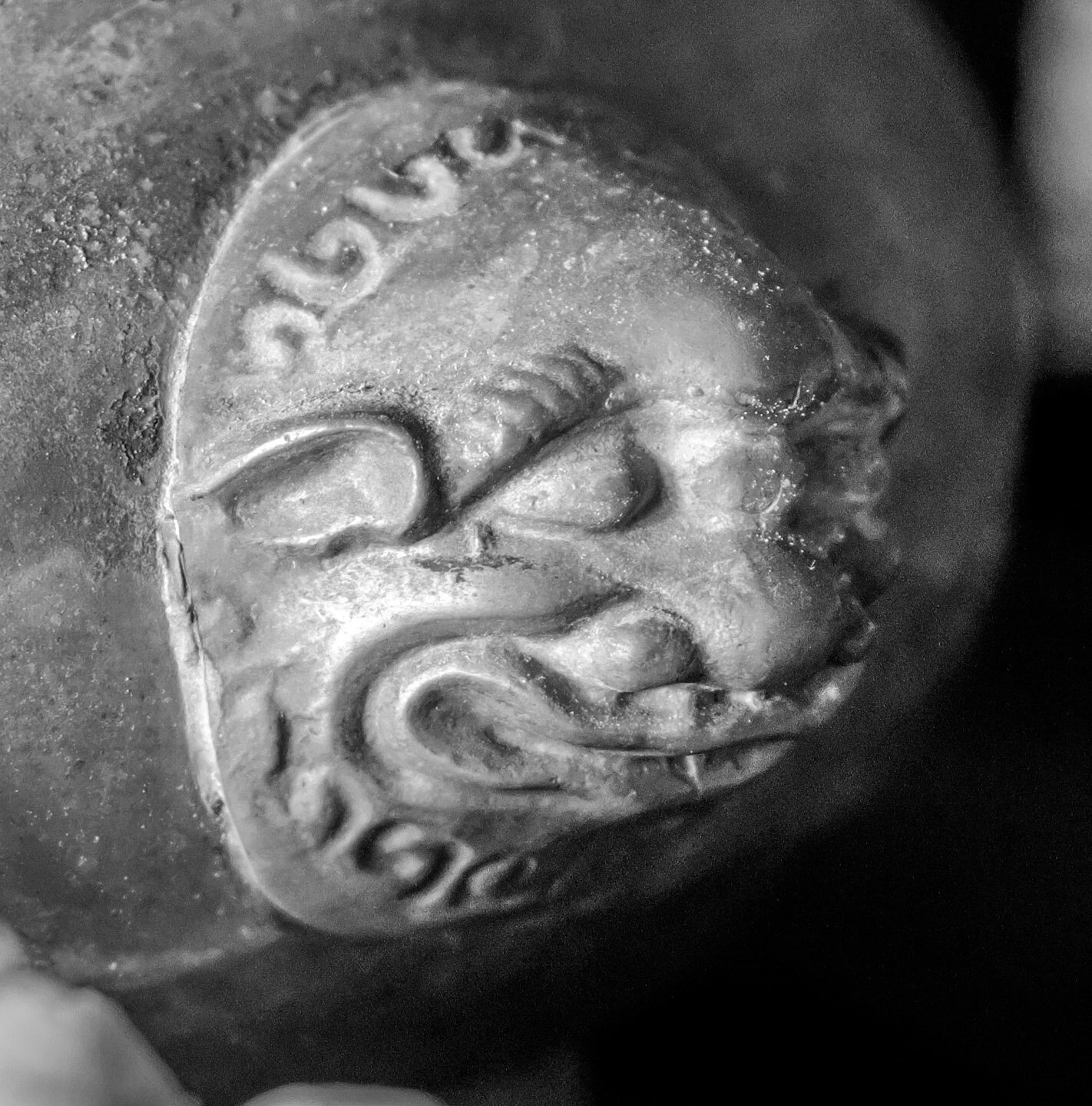
Temple of Kwan Tai History
Official records report the sale of the temple's Albion Street site to the Chinese in 1867. A Beacon article describes formal opening ceremonies held on November 4, 1882. Since 1871, when the deed was recorded to Lee Sing John, successive generations of the Hee Family have held and preserved the Temple, which was awarded California Registered Historic Landmark status in 1979.
In support of anecdotal dating of the Temple construction as 1852, a report by the California State Architect dates construction to the early 1850s based on materials used in the structure. If accurate, this report establishes Temple of Kwan Tai as the oldest "original" Chinese Joss House in rural California. In 1995, Hee family members deeded the temple property to a newly formed non-profit organization devoted to education concerning Chinese immigrant history and to the celebration of community and diversity.
Hee family ancestors Yip Lee and her father Joe Lee.
Our Founders
In 1850, with starvation and insurrection at home and the gold rush beginning in California, immigration was a natural choice for residents of the Canton district, the capital of Guangdong Province in southern China. The first Chinese are believed to have reached the North Coast in the early 1850s. Some say they came by land from Monterey or from the gold mines of central California. Others contend that they were surviving crew members from the shipwrecked Frolic, a China trader that crashed on the rocks at present-day Point Cabrillo on July 26, 1850. In any case, the North Coast Chinese population grew quickly, particularly in the redwood logging camps where men served as cooks, launderers, and water slingers. By the 1860s, Mendocino was home to 500 to 700 Chinese.
Among the early Chinese settlers were Lee Sing John and his wife Fong Sun Choy, both born in the village of Lee Ook Bin, Guangdong Province. Lee Sing John worked for a time as a cook in the woods. Later he worked in the Caspar Mill cookhouse. Their granddaughter, Grace Hee Yee has provided much of the oral history-anecdotal family information-that dates construction of the Temple of Kwan Tai to 1852.
Temple Features
The Temple of Kwan Tai is perched on a south-facing hillside above Albion Street overlooking Mendocino Bay. A simple structure, reportedly built with $12.00 worth of virgin redwood, it survived remarkably intact for nearly 150 years prior to its restoration and rededication in October of 2001.
Freshly painted in its original red with green trim, the Temple glows even through the coastal fog as if to force attention to a migrant community that was, at best, tolerated and, more commonly, shunned. The brilliant red of the simple shiplap siding signifies the essence of joy and good luck.
Entering the building, one walks under a sign in gold Chinese characters on a red painted background. Read from right to left, the symbols proclaim Mo Dai Miu, which means, roughly, "Military God-king Temple."
While the exterior of the building is not a rare architectural gem, the interior is an invaluable resource of ethnic history. Entering the main room, one finds a small table in front of the altar that holds three place settings of chopsticks, and small bowls of various sizes. These bowls hold food offerings for ceremonial occasions. Centrally located in the main room is a small table with a bamboo mat in front where the worshipper may kneel and pray. A small stove in the southwest corner of the room was used for the burning of prayer papers.
Behind the small table is the shrine containing an image of Kwan Tai, the deity to whom the temple is dedicated. This image has temporarily replaced the original fabric hanging depicting Kwan Tai with his son, Kwan P'ing and his faithful follower, Ju Chang. Funds are currently being sought to restore this precious artifact. Fragile from age, it was recently damaged by a sudden gust of wind.
The fortune sticks flanking the portrait of Kwan Tai were formerly used by the priest who lived in the tiny anteroom during the 1870s. Other furnishings are sparse; two simple wood benches line the side walls and two ornate lanterns hang over the prayer table. Except for the portrait and one lantern, interior furnishings are said to be original.
Contemporary Significance
In 1998-1999, Temple of Kwan Tai underwent a thorough Historic Building Assessment by Architect Laura Culberson of the San Francisco architectural firm of Carey and Company. Partially funded by the Cynthia Woods Mitchell Fund of the National Trust for Historic Preservation, the assessment provided the documentation and detailed plans that enabled the Temple to secure restoration funding through the California Resources Agency. Ms. Culbertson concluded her report with the following assessment of the significance of Temple of Kwan Tai:
The Temple of Kwan Tai is an invaluable resource to the State of California. It is the only surviving physical document (made more significant by its continued use from the early 1850s), which retains its original integrity and marks the now mostly lost history of the Chinese in Mendocino. Mendocino was one of the few communities along the Pacific North coast that housed a substantial Chinese community. Although Mendocino's Chinatown burned in 1910, the knowledge of its existence and the cultural and historical relationship between the Temple of Kwan Tai and the Chinese community are significant aspects of local and state history.














